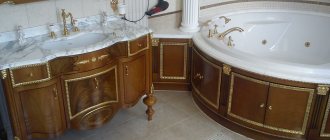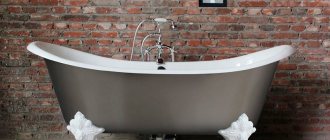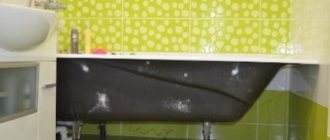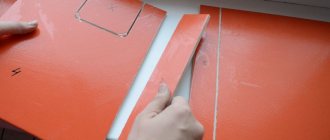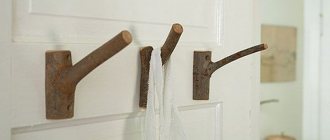A bathtub screen is a structure that occupies space in the visible side part from the floor to the edge in order to cover plumbing wiring. In addition, it also performs an aesthetic function, covering the void under the bathtub. Such screens can have different sizes and configurations, they are made from different materials and can be equipped with additional accessories, for example, doors for storing household supplies or pull-out cabinets. Today you will learn what they are and how you can install them at home.
MDF screens
Screen for bathtub sliding MDF Still from Alavann
They are made from wood board with a film coating.
Why choose MDF panels:
- Easy to maintain - all dirt is easily washed off.
- Variety of designs: you can choose not only a front version, but also an end version, which is indispensable in situations where the bathtub bowl is open on both sides and is not installed tightly between the walls. Both sides are firmly attached to the frame and perform their functions perfectly.
- Affordable price.
Their disadvantages include only standard sizes, which in some cases may not coincide with the dimensions of your bathroom.
Simple and cheap: bath curtains. Perhaps the most budget-friendly, but not very convenient solution, used when it is impossible to find a ready-made option for a bathtub of a non-standard shape. Curtains are not very convenient to care for, and perhaps in this case it makes sense to make them to order.
What materials are best to use?
Manufacturers offer a wide range of decorative bath screens to suit every taste and budget. You just have to choose - buy an inexpensive plastic one or a unique stone one. The second idea is to make it yourself from tiles, mosaics, bricks or wood.
Tile
Ceramic screens come in only one type: solid. A frame is created under the bathtub, which is subsequently lined with tiles, mosaics or porcelain stoneware.
The tiles are placed on plasterboard or polystyrene boards, which in turn are attached to the metal “skeleton” of the future screen. Brickwork is also popular - it is practical and inexpensive.
When installing the structure yourself, do not forget about the window that will provide access to the pipes. To do this, use store-bought hatches or resort to a trick by attaching one section with magnets instead of glue.
The advantages of tiles include:
- Hygiene.
- Practicality.
- Durability.
- Possibility of bending around round, oval, corner bathtubs (for this use mosaic or small tiles).
- Appearance. The end of the bowl, decorated with the same tiles as the floor or walls, creates the feeling of a visually solid space.
- Ease of care. The finished screen can be washed in any way - it is not afraid of either water or aggressive cleaning agents.
Among the disadvantages, we will highlight the cost - high-quality tiles cannot be cheap. As well as the wages of the workers who will lay it.
The photo shows the bathtub lining in the color of the walls
MDF
Before use in wet rooms, fiberboards are treated with a protective solution and are not afraid of contact with water. Therefore, feel free to use moisture-resistant MDF screens in bathrooms.
Among the advantages:
- Appearance. Order facades to match the furniture to get a single set.
- A wide range of. The coating of the slabs differs not only in color, but also in texture.
- Varieties of forms. The market offers not only front, but also end screens made of MDF - this is convenient if 2 sides of the bowl are visible.
- Affordable price. The cost starts from 2,500 rubles, this is a favorable price-quality ratio.
- Easy care. There will be no problems with cleaning - wipe with a damp cloth.
Also check out the list of cons:
- Short service life. Despite the protection, exposure to moisture destroys the material over time. The average lifespan of a screen is 3 years.
- Deformable fabric. A wide monolithic slab can “lead”, which will lead to its twisting or bending.
- Standard size. Unlike plastic, the size of MDF is not adjustable. Therefore, you should either choose the ideal dimensions, or adjust them to the required parameters, or make them to order.
Plastic screens
The plastic screen has gained popularity due to many advantages:
- Affordable price. Prices in stores start from 700 rubles.
- Variety of shades and designs. White, plain or patterned - you'll find it all.
- Large selection of designs. The most common types are sliding or solid panels.
- Moisture resistance. Plastic is not afraid of steam, humidity and even water - it does not deform or swell.
- Easy to care for. The seal can be damaged by aggressive chemicals, but water or a soap solution is usually enough to clean the plastic.
- Durability. With proper care, the material will not lose its appearance even after 5-10 years.
In addition, the plastic screen is easy to install yourself. It is often possible to adjust the height using the legs on the frame. But even if there are no legs, a stationery knife is enough to trim thin plastic.
Among the disadvantages, we note fragility: even a slight blow can lead to a dent. The second point in the design itself is that the doors on the cheapest sliding screens under the bathtub stick and sometimes fall out of the grooves. And the grooves themselves become clogged with dust and are difficult to clean.
The photo shows a sliding plastic screen with printing
Plexiglas or mirror
The bath screen is made of special glass: it is especially durable and safe. Even if you break something like this (which is almost impossible), the edges of the fragments will not be sharp.
Other advantages of organic glass:
- Hygiene. Its surface prevents the appearance of mold and mildew.
- Sun protection. If there is a window opposite the bathtub, do not be afraid of fading and yellowing.
- Large selection of colors and textures. Plexiglas can be glossy and matte, transparent and cloudy. When ordering the production of an individual screen, you can choose any shade.
- Durability. The glass panel will not change shape even with prolonged use.
- Environmentally friendly. The material does not emit hazardous substances even when burning.
There are not many negative aspects, among them:
- High price. The screen will cost 50% or more more compared to MDF.
- Difficulty of care. Smudges and stains are visible on the glass, but the coating cannot be washed with alcohol solutions - so you will have to look for other high-quality products.
- Danger of mechanical damage. It is almost impossible to repair a scratch from a sharp object.
A mirror surface will be an excellent choice for the interior of a small bathroom. Reflectivity enhances the room, and with lighting you get the effect of a floating floor. Installing a mirror screen is not easy, most likely you will need the help of a specialist.
In the photo there is a mirror finish under the bathtub
Aluminum screens
Structures made from light metal - aluminum, are gaining popularity due to:
- Favorable price. They are cheaper than glass ones, and in terms of quality level they are not inferior to wooden ones.
- Increased strength. It is impossible to break it under normal operating conditions.
- Large selection of colors. It is possible to apply any image to the aluminum screen. Moisture resistance. This metal does not rust, and mold and bacteria do not form on its surface.
- Easy to clean. Just like plastic or MDF, aluminum can simply be wiped with a damp cloth.
There are practically no downsides to this solution, except for the difficulty of purchasing. They are not found in all specialized stores, and you will probably have to order and wait for the desired size.
Acrylic screens
These panels are made of plastic and coated with acrylic - they are lightweight and durable. Sold complete with bowls. You can choose a screen for your acrylic bathtub after purchase, but to do this you need to know the name of the model and its parameters.
Pros of acrylic structures:
- Integrity. The screen fits perfectly in color and size, forming a single composition with the bathtub.
- Easy to install. The clamps are sold as a set; they are easy to install, as well as remove them if you need access to the pipes.
- No cracks. This is where unnecessary dirt usually accumulates.
- Easy to care for. Wipe with a damp cloth or wash with cleaning agents, just like the bowl itself.
Among the disadvantages of acrylic panels are uniformity and impracticality. Most often, the design is solid, which eliminates the possibility of storage under the bathroom.
The photo shows an acrylic design for a square bowl
Glass and mirror screens
This is the best choice of screen for a bathtub designed in an ultra-modern style. Most often, sliding models are made of glass. Organic glass is a moisture-resistant material that does not allow the growth of mold and bacteria. Another advantage is the strength of this material.
Separately, we should mention a practical and original option - panels made of organic glass with mirror coating, which perfectly complement almost any interior.
By choosing such a screen for the bath and correctly placing the other mirrors, you will get the effect of an expanded space and a room filled with light. True, the mirror surface is somewhat more difficult to care for and use in everyday use than the usual plastic doors.
Natural materials for bathroom design
The current trends in modern society to “use everything natural in all sectors of life” have led to the fact that bath screens began to be made from wood. It would seem that a worse material could not be found, because it is susceptible to delamination, the formation of fungus, and does not withstand moisture well. However, with the help of special chemical compounds, the wood base can be treated in such a way that the above negative conditions cannot have any effect. It’s just worth mentioning that such screen devices are made only to order and their price is very, very considerable.
It is less common to decorate a bathroom with natural stone. In this case, such a decorative element can be considered as an excellent alternative to ceramic tiles, especially since stone is a durable material. And with sufficient design skill, you can create an exclusive masterpiece in the bathtub. Unfortunately, again, this option is most often made to order.
Aluminum screens
Aluminum screen for bathtub
Perhaps, this is one of the best options for choosing a screen for a bath based on the price-quality ratio. Aluminum models rarely break and last a long time.
Sliding structures are also the most popular here. A mixed version is often used, when one wall is plastic or, for example, glass with a mirror coating.
Self-installation of a sliding screen
Installing a sliding screen on the bathroom is absolutely simple. To do this, you will not need high professionalism and special skills, just a little patience, accuracy and diligence.
Installing a system for a cast iron bathtub does not require additional work. You will only need to fix the legs so that the sliding panel structure is in the correct position. Acrylic bathtubs require special care ; by unscrewing the legs, you can raise the bowl a little.
- The frame for the panels is made of ordinary ceiling profiles, which are secured under the side of the bowl with wooden beams installed vertically. Tightly tap the boards between the floor and the bathtub.
- Then take the aluminum corners and make holes in them for fastenings, for which use an electric drill. Ensure that the panels are securely and firmly secured.
- When the screen does not match the dimensions of the bathroom, carry out a more careful calculation (subtract the thickness of the corners from the distance between the two walls). Take out the screen and cut the guides to the calculated size.
- Then insert the legs into the screen and, having selected the required height, install the frame. Mark the areas on the wall for fastening the corners and make holes along them for the dowels. The length of the top panel of the screen must reach its center, and the inner panel must extend beyond the top by about 5 cm. Then cut the curtains with a grinder to the required size.
- Apply silicone to the guide, place the frame and securely fasten the corners. Immediately remove excess silicone with a dry cloth before it dries. For greater operating comfort, install handles on both sliding panels of the screen.
At this point, the entire installation procedure can be considered complete. As you can see, there is really nothing difficult here. Just choose quality materials, be careful and attentive.
Monolithic cladding
Monolithic cladding is more of a way to fence off space. It opens up new design possibilities, but at the same time loses greatly in functionality. If it becomes necessary to gain access to the drain or pipes, the lining will have to be dismantled. And of course, any use of the space under the bathroom becomes impossible.
Sometimes small shelves for storage are provided inside the facing structure.
However, there is a way to gain access to communications without harming the bathroom decor - leave a special, uncovered space to troubleshoot possible problems. You can install a ready-made inspection hatch in it or attach one of the tiles yourself with magnets.
To do this, four small magnets are glued to the corners of the tile and four more are attached to the sides of the hole. Then access to the water pipes can be obtained with a slight movement of the hand.
Which screen design should you choose?
The most popular and easy to use are sliding models. The door plates move inside a rigid frame. On one side there is access to the pipes under the bathtub, and on the other there is storage space.
Unfortunately, despite this, this option cannot be called optimal. The structure is quite difficult to firmly fix; the doors also have to be replaced after a short time.
But if you need an option that is easy to install and use, it is better to choose a sliding screen for the bathroom.
Screen for bathtub sliding MDF Still from Alavann
The hinged screen is a replica of the sliding design theme. The doors in them do not move to the side, but swing outward. Before choosing a similar screen for the bathroom, you should make sure that there is enough space in the bathroom to open and close the doors freely.
Hinged screen for bathtub
There are sliding models even for corner baths. With their help, the bathtub becomes a shower stall, very beautifully decorated with a wide variety of effects.
An original and functional solution for spacious rooms is a design with a withdrawable unit. Drawers of different sizes and volumes can accommodate a variety of storage containers. A similar screen is shown in the photo.
Roll-out screen for bathtub
Folding structures, which appeared relatively recently, are becoming increasingly popular. The solid door is attached to the frame using a gas lift or other mechanisms, opens easily and can be locked in the ajar position.
Inside the door there are shelves or special baskets in which it is convenient to store household items or household chemicals.
Folding screen for bathtub MDF Soft from Alavann
Features of installation of decorative panels
Ready-made screens, provided that all sizes match, are installed fairly quickly. But sometimes the height of the legs is not enough to cover the space under the bowl. Then the standard bolts are replaced with longer ones.
Problems can also arise if the bathtub is not installed strictly horizontally. In this case, it is better to first check the level of installation of the plumbing itself and correct this situation.
Before purchasing or installing, it is better to measure the height of the bathtub and make sure that the adjustable height of the screen is enough to hide the unsightly space underneath.
A mismatch in product width can also complicate installation. A screen that is larger in width than necessary is reduced by cutting the frame on the sides. But you need to be prepared that not every product can be cut. If the screen is smaller, then the remaining space is covered with a small plasterboard wall.
Despite all the variety of models, sometimes you still have to make the screen yourself. This also happens because the required size or shape may not be available for sale. An incentive to independently build a decorative panel can also be the desire to maintain style, embody an original idea, and make the most of the bathroom space.
It is easier to install the screen yourself if it is a one-piece design. If you want to provide maximum access under the bathtub and use this space for storing things, then it is better to use a screen with doors.
But installing a sliding screen under a bathtub on your own will be more difficult and hardly cheaper. For bathtubs of standard sizes and shapes, it may be better to consider ready-made options.
How to choose a bath screen size?
First of all, carefully measure the bathtub from all sides. When choosing, it is worth considering that it is easiest to install the model yourself on legs with adjustable height.
Despite the wide choice, the vast majority of models have a standard height - 50 or 60 cm and a length from 150 to 180 cm. Models with dimensions of 100-120 cm are less common.
The height of MDF screens is most often 56 cm. If it does not fit in dimensions, you can simply saw down the panels and varnish the sections.
This design provides additional storage space. Often, shelves with sides are even built under the bathtub, on which, for example, detergents can be stored.
The length of plastic screens for acrylic bathtubs usually varies between 150-170 cm, and the height ranges from 50 to 56 cm and is adjustable using retractable legs. It is convenient when there is a small space left under the frame, making it possible to get close to the bathtub.
The easiest way is to choose the size of removable one-piece structures - they are usually available in various sizes.
But it is not enough just to choose the size of the screen for the bath. It is worth considering the location of the pipes - you may have to cut the panels yourself or swap the stationary and movable panels.
In addition, it makes sense to carefully check the quality of the fittings - the service life and ease of use of the product also depend on it. It is best if the handles are made of stainless material – galvanized steel.
Choosing screen handles made of stainless material
If you have chosen a design with doors, check that they are securely fastened, look at what the hinges are made of. In sliding models, the quality of the roller mechanism is of particular importance - the doors should move without any effort.
You should also not count on the long service life of plastic fittings.
Installation
The finished product package contains instructions on how to properly install the screen under the bathtub. For structures of the same type, the assembly process is approximately the same, regardless of the size of the bathtub screen. The difference may only lie in the parameters of the facades and components. The screen for a high bathtub and the legs for its installation have an additional height reserve of 5 cm.
Since all fasteners and fittings are included in the kit, the preparation and installation process takes very little time. Let's take a step-by-step look at how to install a screen under a bathtub.
- Fill the bath with water.
- Attach handles to the front panel of the screen.
- Insert the legs into the holes located at the bottom of the product.
- Place the screen under the side of the bathtub.
- The height of the screen under the bathtub is adjustable with legs to such a position as to firmly fix the structure.
We looked at how to install a sliding screen under a bathtub, which comes assembled. If the structure must be assembled from individual elements, the installation process will look different.
- Horizontal guides must be placed on a flat surface.
- Place vertical frame elements across.
- Align the fastening holes and secure with self-tapping screws without fully tightening them.
- Insert the façade panels into place.
- Now you need to adjust the guides in height so that the canvas moves freely but does not fall out.
- Secure the screws.
Next, the process is performed in the same way as in the previous version. If there are protruding pipes or baseboards in the bathroom, the question arises of how to install a screen under the bath so that the doors move normally and completely cover the free space. To do this, you need to measure the protruding elements, mark the parameters on the screen and use a regular knife to cut out the part that hits the protrusion.
Cheap factory structures are not characterized by high strength and rigidity, so after installation, owners are often unhappy that the structure “wobbles.” There is a little trick on how to attach the screen under the bathtub to make the structure more durable. Factory screens do not provide for mounting the guides to the wall. This omission can be easily corrected, and then even the cheapest panel will stay firmly in place and serve faithfully for a long time. To do this you will need 4 metal corners. They are attached to the ends of the horizontal guides and fixed to the wall with self-tapping screws.
Acrylic bathtubs come in a variety of shapes, and screens, as a rule, are also made of acrylic. How to attach the screen to an acrylic bathtub depends on the design of the screen and the configuration of the bathtub. If the product has a rectangular shape, a regular plastic or MDF panel, the installation of which we discussed above, will be suitable for it. If the bowl has a figured shape, the front panel is included in the package. In this case, installing the screen on an acrylic bathtub is carried out in accordance with the instructions. Mounting options may vary for products from different manufacturers. In most cases, attaching the screen to an acrylic bathtub is done by fixing its lower part to the frame, while the upper edge of the panel is placed under the side of the bathtub.

